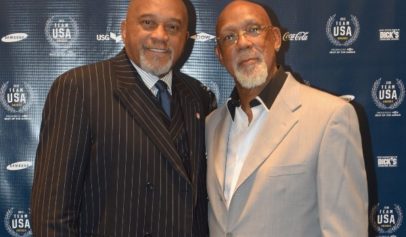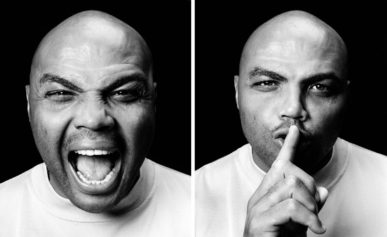On Oct. 16, 1968, 24-year-old Tommie Smith edged out Australian Peter Norman and American John Carlos in the 200-meter race at the Mexico City Olympics, breaking the world record at the time and winning the gold medal.
As the American national anthem played during the medal ceremony, Smith bowed his head and raised his black-gloved right fist in the air, while the bronze medalist, Carlos did the same with his left fist. The silent gesture against racial discrimination caused a stir at the time, inciting boos from the crowd as Smith and Carlos left the podium, along with a complaint from the International Olympic Committee. That image of the two men with their fists in the air became a symbol for human rights that meant many things: equality, freedom and progress.
Almost four and a half decades later, Smith’s raised fist is back in the spotlight as the subject of Los Angeles-based artist Glenn Kaino’s conceptual work “Bridge,” which debuted last weekend at the art fair Expo Chicago, held at the city’s Navy Pier. Kaino unveiled the piece as a work in progress. It included 32 gold-painted fiberglass casts of Smith’s arm suspended from cables attached to the Navy Pier’s vaulted ceiling. The casts formed the beginnings of a bridge that started at waist level and rose to approximately 25 feet in the air. On Sept. 21, Smith, Kaino and Los Angeles County Museum of Art contemporary curator Franklin Sirmans participated in a discussion on Smith’s historic gesture and Kaino’s tribute, mere feet from the display.
“I find that work like that — that’s what art is all about,” says Tony Karman, Expo Chicago’s president. “It’s to inform, to engage, to provoke, and that installation did an extraordinary service to not only Tommie Smith’s gesture in 1968, but the need for that gesture in 2013.”
The genesis of “Bridge” was when a friend of Kaino’s, Michael Jonte, noticed a photograph of Smith and Carlos’s iconic salute in the artist’s office. “I’m a big student of activism and moments in history where people have the courage to create sacrifice in order to change,” says Kaino, whose work has been shown at the Whitney Museum of American Art in New York and at the Cairo Biennale.
Jonte mentioned that Smith had been his coach at Santa Monica College and put Kaino in touch with the former Olympic champion. Kaino then flew to Georgia to meet Smith and his wife, Delois. For Kaino, who was born four years after the Black Power salute, that image had always been a moment in history, not a memory of his own. They watched a video of the 1968 race, with Smith narrating each stride. “What I had known to be a symbolic moment was being broken down to me as a memory every step of the way,” Kaino says.
Read the rest of this story on Al Jazeera


